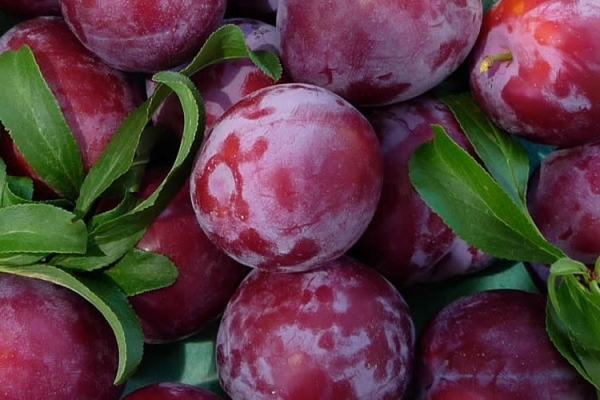Chinese plum is a dicotyledon flowering plant, the appearance of which hardly resembles the usual plum tree. Homeland plums are the northern regions of China, hence, in fact, the name.
The shape of the stems and leaves of the plant resembles willow twigs, therefore another name of this plant is used in botany - “willow plum”. You can also find such a name as Juelinka.
Table of contents
Description of skoroplodnoy grade
The height of an adult tree does not exceed 2 metersthat allows you to harvest as quickly and safely as possible.
The color of young branches is bright red with a yellowish sheen, the branches are bare, sometimes velvety, covered with purple-brown or red-brown bark.
Leaf shape oblong, the average sheet length is 7-10 centimeters, width is 3-4 centimeters. The edges of the leaves are jagged, at the base they narrow. The color of the upper part of the leaf surface is dark green, the surface itself is smooth. Petiole length - 1.5-2 centimeters. The shape of the crown is spherical.
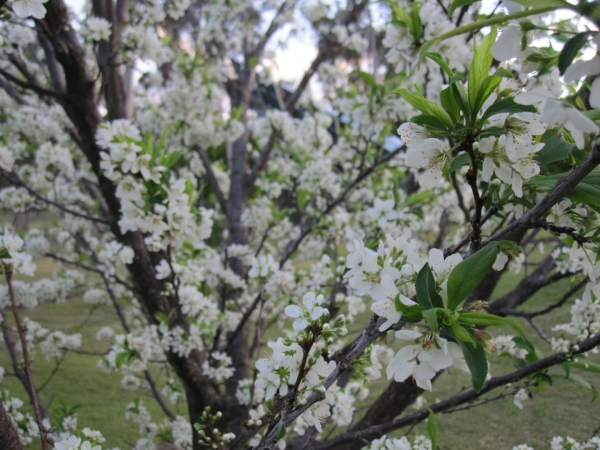
Toward mid-April, the plum is covered with white flowers, collected in umbrella inflorescences. Fruits are round, pear-shaped or egg-shaped, about 4-5 centimeters in diameter.
Fruit color is yellow, red, purple, or green. The skin of the fetus is rough. Chinese plum has excellent taste, the fruit is sweet and sour, well transported, stored for a long period of time. Gather the fruits in August.
Breeding history
For the first time Chinese gardeners became interested in Chinese plum. For a long time it was grown exclusively in Asian countries, but in the first quarter of the last century, Russian breeders made an attempt to select the plant.
As a result of repeated crossings, a completely new variety of plum was obtained - “Russian plum”, which became a hybrid of cherry plum and Chinese plum. Experiments in the field of selection continue in our days.
Most popular gardeners enjoy such famous hybrid varieties as:
- Alenushka. The plant belongs to samobesplodny, early ripe grades. The height of the tree reaches 2-2.5 meters. The krone is dense, raised, cone-shaped. Plums are round, fruit color is red. Ripe plums do not crack, their diameter does not exceed 5 centimeters, weight reaches 40 grams. The flesh tastes sweet and sour, its orange color. One hectare manages to collect up to 190 centners of plums. The presentation of the fruit is maintained for a long time, which allows the use of this variety for industrial purposes.
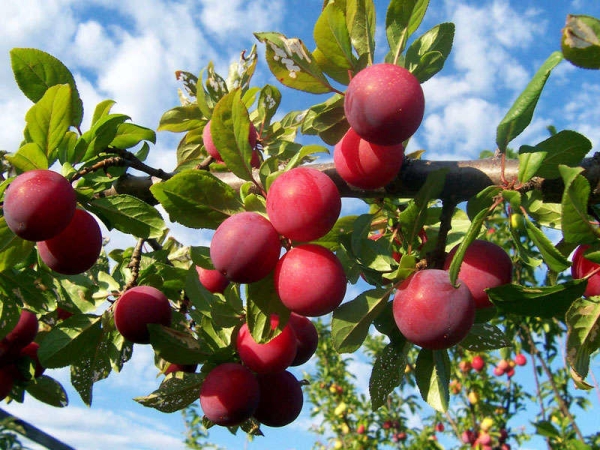
- Manchu Beauty. Fruiting begins early, the variety is skoroplodny. The crown is dense, its shape is round, the height of the tree does not reach even 1.8 meters. The color of the bark is brown with a slight grayish tint. The leaves are elongated, dark green, shiny. Ripe fruits are small, their shape is round, the base is flat. Fruit weight does not exceed 20 grams. From one tree it is possible to collect up to 12 kilograms of plums. The flesh of the fruit is yellow-green, the taste is sweet-sour. The variety is drought resistant, fruits are conveniently transported, plums do not lose their presentation. The only drawback - the rapid shedding of ripe fruit.
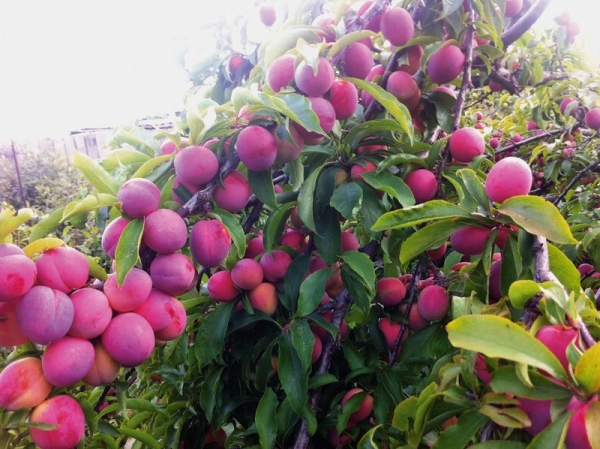
- Ussurian plum. A variety of medium ripeness. Ripens from mid-August to mid-October. The height of the tree reaches 4 meters. The first fruits appear about 3-4 years. Fruiting lasts up to 10 years. The shape of the fruit is spherical, the color of the fruit is red or yellow. Ripening does not occur at the same time, the fruits are sweet, can not be transported.The yield of the variety is high, the Ussurian plum is sufficiently winter-resistant, abundant fruiting.
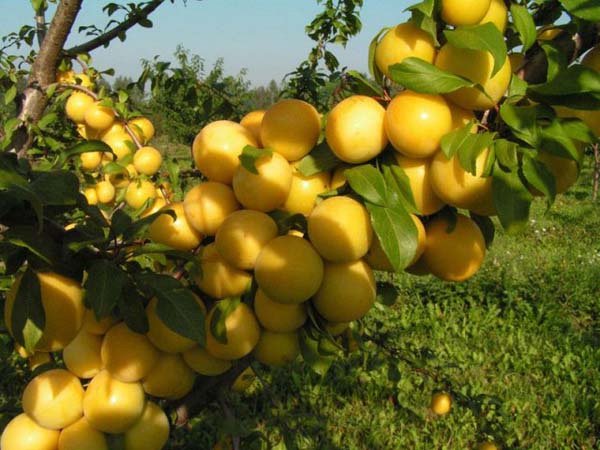
- Covenant. Late ripening, fruit ripening occurs at the beginning of September. The height of the plum reaches 4 meters. Crohn raslapisty, its average density. The fruits are large, their weight reaches 35 grams. The color of the fruit is light yellow, the taste is sweet and sour, the flesh is peach. The stone is large, poorly separated from the pulp. From one tree can collect up to 40 pounds of fruit. The drain is transported with almost no losses, the variety’s winter hardiness is high, the pests are practically not afraid of it.
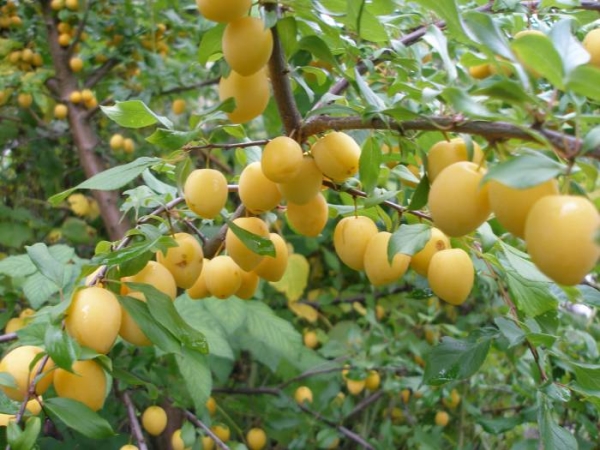
The most suitable for the Russian climate are also considered such varieties as Krasa Orlovschiny, Red Ball, Golden Ball and Sissy.
You may be interested in the following publications:
These varieties are very popular with gardeners.Each of them has a high resistance to frost, good fertility and resistance to parasites.
Advantages and disadvantages
The main advantage of the variety is increased winter hardiness and high yield. Unfortunately, this can also be a significant disadvantage.
In regions with a dry or excessively humid climate, the plum may die. Most often, the death of the plant occurs as a result of rooting of the roots.
Chinese plum - not only fruit, but also ornamental plant. During the flowering period, plum trees become a real decoration of any garden, because they can often be found in this very quality.
In addition, many varieties of plums cannot pollinate themselves, bloom early, their root neck is quickly damaged.
Growing region and cultivation features in other regions
In vivo Chinese plum grows on mountainous edges. The wild plant was cultivated several centuries ago by Chinese gardeners. Soon the secret of plum cultivation became available to residents of Japan and Korea.
In Russia, Chinese plum has not been popular for a long time. However, the plant possesses amazing frost resistance.
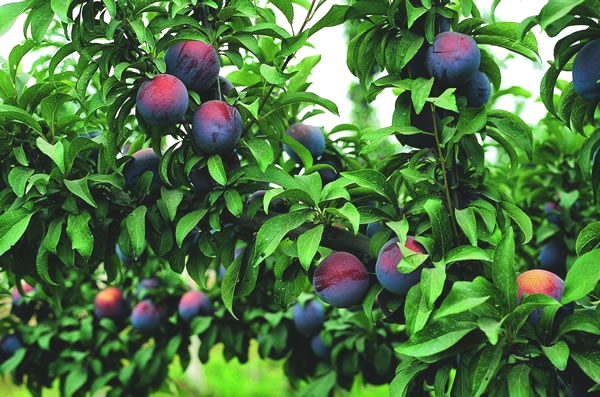
The tree is able to withstand a drop in temperature. to -56 degrees Celsiustherefore, it is successfully grown in Siberia and the Far East. The tree also feels good in central Russia.
Fruiting starts early, about 2-3 years after planting.
Planting rules for seedlings
Plum prefers to grow on chernozem, forest, clay and gray soils with a neutral or alkaline medium and an increased amount of calcium. Groundwater should be located no closer than 1.5 meters to the surface.
The landing hole is big. It should fit up to 10 liters of rotted manure, 50 grams of potash salt and 300 grams of superphosphates. To prevent the rapid evaporation of moisture, sprinkle sawdust and peat around the seedling.
Plum is not pollinated by yourself, because seedlings should be planted next to other trees, best near cherry plum.
Features care and trim
Chinese plum is not picky about growing conditions, but in an effort to get a good harvest, gardeners begin to feed the plant the next year after planting.
As a top dressing are used nitrogenous fertilizers. Top dressing is made up to 3 times a year.
First feeding produced before flowering. The soil layer around the tree is watered with a solution of water, potassium sulfate and urea. To prepare the solution will require up to 10 liters of water, 60 grams of potassium sulfate and the same amount of urea.
The second time the plant feeds after the appearance of the first fruits and their entry into the stage of maturation.
Last feed produced after the crop is harvested.
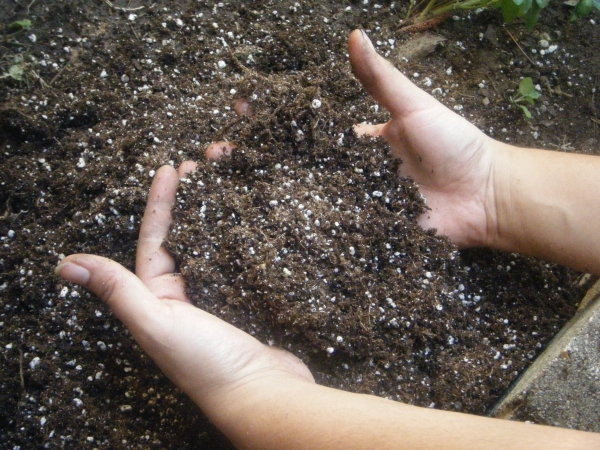
Chinese plum loves wet soils. Water the plant regularly. During the drought, watering is accompanied by soil mulching. At the same time, special attention is paid to the impregnation of the soil layer with water to a depth of at least 0.4 meters.
Immediately after planting, the seedling is pruned approximately 50-60% of its initial growth. Such a sharp pruning accelerates growth, contributes to the addiction to new conditions.
Reproduction of Chinese plum
The tree propagates with the help of a bone or a regular graft. To get the bones, you should choose healthy ripe fruits that have fallen from the tree on their own. It is necessary to separate the flesh from the stone only after the fruits have compacted.
If the bone is planted in late autumn or in early spring, care should be taken to ensure that it does not freeze. After planting, the place where the bone is located should be covered with sawdust or straw.
With the help of graft plum propagate only experienced breeders. It is hardly possible to graft a tree right the first time, it is much easier to grow a seedling from a stone.
Diseases and pests
Plum is practically not afraid of pests, it is not afraid of the diseasewhich fruit trees often suffer from.
The greatest threat to the tree is plum moth. The pest infects the fruits and leaves of the plant.
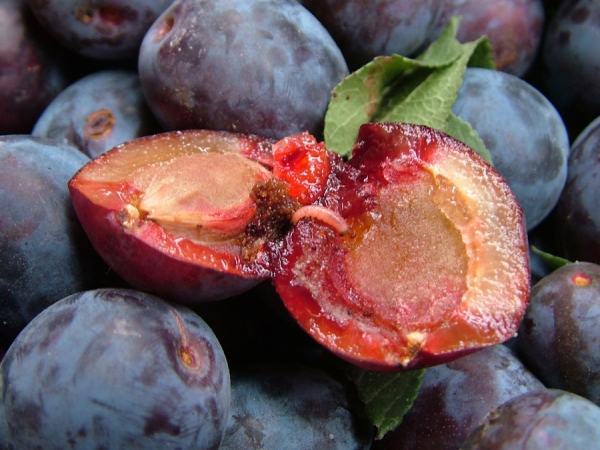
Fighting begins in the flowering period and ends about 1 month before the planned harvest. Pheramonic traps and spraying wood with chemicals are an effective means of control. Spraying is done every 2 weeks.
Diseases such as monilioz and klyasterosporiosis. In order to prevent the development of these diseases, the plant is treated with a 3% solution of Bordeaux mixture.
